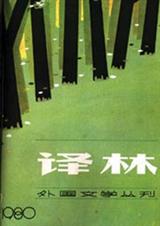30+mba-第58部分
按键盘上方向键 ← 或 → 可快速上下翻页,按键盘上的 Enter 键可回到本书目录页,按键盘上方向键 ↑ 可回到本页顶部!
————未阅读完?加入书签已便下次继续阅读!
death in 1924; defined economics in his influential textbook Principles
of Economics as: ‘a study of mankind in the ordinary business of life; it
examines that part of individual and social action which is most closely
connected with the a。。ainment and with the use of the material requisites
of well…being。 Thus it is on one side a study of wealth; and on the other;
and more important side; a part of the study of man。’ Today that definition
has been shortened in most textbooks on the subject to: ‘Economics is the
social science which examines how people choose to use limited or scarce
resources in a。。empting to satisfy their unlimited wants。’
The dismal science; as economics is o。。en referred to; reveals something
of the contradictions inherent in the subject itself。 Science to most people
means a subject prising fundamental truths that hold good under all
conditions and forever。 Two and two equals four; or the area of a circle =
πr2; work equally as well as propositions in Mongolia and on the Moon。
But put two economists together and you will get three economic theories。
Worse still; if you put three together you could end up with six!
7
196 The Thirty…Day MBA
SCHOOLS OF ECONOMIC THOUGHT
Groups of economists who broadly share the same views are collectively
known as schools。 Thinking of these as places where people are learning
about a constantly changing dynamic subject is a more useful concept than
considering economics to be a science。 With Buddha seeking to eliminate
want; Malthus who was sure that human populations grew faster than
food production and so charity was self…defeating; Marx and Keynes who
for different reasons saw the state’s role as central and Adam Smith whose
‘Invisible Hand’ saw all economic activity as being subject to the law of
unintended consequences; there has been and is some scope for diversity。
The two economic theories that every self…respecting MBA must have an
appreciation of are:
。 Keynesian: A theory of macroeconomics developed by British economist
John Maynard Keynes and documented in his book The General
Theory of Employment; Interest and Money; published in 1936。 He argued
that low demand is the primary cause of recessions and that government
fiscal policies (see below) should be the method employed to
create employment; control inflation and stabilize business cycles。
This work initiated the modern study of macroeconomics and guided
economic thinking; only diminishing in popularity in the 1970s when
violent shocks to economies; caused particularly by escalating oil prices;
simultaneously led to high unemployment and high inflation rates。
This challenged the central implications of Keynesian economics。
。 Monetarist: First put forward by the economist Milton Friedman and
the Chicago school of economists。 Friedman and Anna Schwartz (an
economist at the US National Bureau of Economic Research) in their
book Research Monetary History of the United States 1867–1960 argued
that ‘inflation is always and everywhere a monetary phenomenon’。
Friedman advocated that a country’s central bank should pursue a
monetary policy (see below) such as to keep the supply of and demand
for money at equilibrium。 By 1990 monetarism was being challenged
as it could not be reconciled with; among other things; the inability of
monetary policy alone to stimulate the economy in the 2001–03 period。
MICRO VS MACROECONOMICS
Microeconomics is the study of economics as it affects small units such as
individuals; families; firms and industries。 Macro is a study of the forces
that affect a whole economy。 The main concept used in microeconomics;
and one that underpins almost the whole subject of economics; is that of the
price elasticity of demand。 The concept itself is simple enough。 The higher
Economics 197
the price of a good or service the less of it you are likely to sell。 Obviously it’s
not quite that simple in practice; the number of buyers; their expectations;
preference and ability to pay; the availability of substitute products also
have an effect。 Figure 7。1 is that of a theoretical demand curve。
The figure shows how the volume of sales of a particular good or service
will change with changes in price。 The elasticity of demand is a measure
of the degree to which consumers are sensitive to price。 This is calculated
by dividing the percentage change in demand by the percentage change
in price。 If a price is reduced by 50 per cent (eg from £100 to £50) and the
quantity demanded increased by 100 per cent (eg from 1;000 to 2;000); the
elasticity of demand coefficient is 2 (100/50)。 Here the quantity demanded
changes by a bigger percentage than the price change; so demand is
considered to be elastic。 Were the demand in this case to rise by only 25
per cent; then the elasticity of demand coefficient would be 0。5 (25/100)。
Here the demand is described as being ‘inelastic’ as the percentage demand
change is a smaller than that of the price change。
Having a feel for elasticity is important in developing a business’s
marketing strategy; but there is no perfect scientific way to work out what
the demand coefficient is; it has to be assessed by ‘feel’。 Unfortunately; the
price elasticity changes at different price levels。 For example; reducing the
price of vodka from £10 to £5 might double sales; but halving it again may
not have such a dramatic effect。 In fact it could encourage one group of
buyers; those giving it as a present; to feel that giving something that cheap
is rather insulting。
MARKET STRUCTURES
The whole of the subject of economics as practised in advanced economies
is predicated on the belief that market forces are allowed a large degree of
High
High
Low
Price
Volume
Figure 7。1 The demand curve
198 The Thirty…Day MBA
freedom。 New firms can set up in business; charging the price they see fit;
and if their strategy is flawed they will be allowed to fail (see also Chapter
8; Entrepreneurship)。 Price is allowed to send important signals throughout
the economy; apportioning demand and resources accordingly。 But perfect
petition; where price is allowed such freedom; is only one of four
prevailing market structures; although market economies are dominated
by near…perfect petition; that is not maintained without a struggle。
The following are the four market structures that are at work in
economies。
Monopoly
Monopolies exist where a single supplier dominates the market and so
renders normal petitive forces largely redundant。 Price; quality and
innovation are promised; so deliver less value to the end consumer
than they might otherwise expect。 Microso。。 has a near…monopolistic grip
on the operating system market; as has Pfizer; the pharmaceutical giant;
through its patent on the drug Viagra; and British Airports Authority
(BAA); which runs Heathrow; Gatwick and Stansted; has a similar hold on
London airports’ traffic。
Monopolies claim that without being allowed to dominate their market
it would be impossible to get sufficient economies of scale to reinvest。
That was the argument of the early railway panies and it was BAA’s
argument in 2008 in defending itself against the prospects of a governmentenforced
break…up。
In countries where monopolies are seen as being detrimental; bodies exist
to regulate the market to prevent them being too powerful。 The UK has
the petition mission (wwwpetition…mission。uk); the
United States the Federal Trade mission (。。c。gov) and the EU
has The European mission (h。。p://ec。europa。eu/m/petition/
index_en。html); all keeping monopolies in check。 A duopoly is; as the name
would suggest; a particular form of monopoly with only two firms in the
market。
Oligopoly
This is where between 3 and 20 large firms dominate a market; or where
4 or 5 firms share more than 40 per cent of the market。 The danger for
consumers and suppliers alike is that these dominant firms can control
the market; to their disadvantage。 Supermarket chains in the UK; airlines;
oil exploration and refining businesses the world over operate as virtual
oligopolies。 Fr



